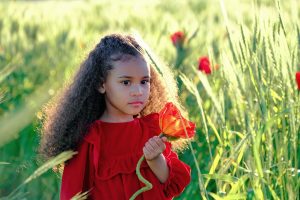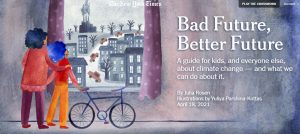 It’s time to step up climate education. Earth Day has come and gone, but the need for awareness, knowledge, and action continues every day. To make this a better, healthier planet for all, we must provide children with the agency to make sustainable decisions for their future well-being.
It’s time to step up climate education. Earth Day has come and gone, but the need for awareness, knowledge, and action continues every day. To make this a better, healthier planet for all, we must provide children with the agency to make sustainable decisions for their future well-being.

Explore this excellent guide about climate change for kids, opens a new window from The New York Times. (See how to access NYTimes.com, opens a new window at home.)
Teach toddlers about the environment
Unlike literacy development in the early years, children learn about the environment through physical interactions rather than books. Engaging with nature during play, kids can discover their place in the world and how they can protect it in the future. Here are a few creative ways to begin:
Color identification. Ask kids to name the colors of different plants and animals while outdoors. Easily examples are grass and leaves for green and birds that are red, orange, and yellow.
Seasons. Notice how landscapes change from season to season. In winter, the air becomes cold, trees lose their leaves, and fewer animals and insects are visible. Compare these observations to the summer when the air is warm and more animals are at large.
Sounds. Listen to what can be heard in nature and name the associated words. For instance, the buzz of bees, the chirp from birds, or the roar of waves in the ocean.
Insects and bugs. Discover the many organisms while playing in a patch of dirt or mud. Talk about soil and look for living insects and plants with popsicle sticks and string while having fun.
Plants. Collect fallen leaves from the ground to teach about the different types of trees native to your region. Emphasize the importance of protecting nature by doing their best to leave it undisturbed. Coloring pages can also engage children with colors and plant knowledge during seasons that are not conducive to playing outdoors.
Life cycles. Use a jar to watch the life cycles of ladybugs, butterflies, or frogs (if you have a glass tank). Toddlers can safely observe the progression of these organisms, assist in feeding them, learn about their place within the food chain and help in their release to the wild.
More resources
Environment California Activities Kids Can Do at Home
Environment Massachusetts Renewable Energy web series, opens a new window ages 6-10
Environmental Protection Agency, opens a new window Homework Resources about Environmental Issues, opens a new window
Global Environment Media, opens a new window
National Park Service, opens a new window Connected Conservation webinars, opens a new window
Booklist
Sources
Earthday.org. (2021, March 10). The Benefits of Environmental Education for Toddlers.
SLJ Staff. (2021, April 6). Educational resources and climate webinars for earth day. News & Features. School Library Journal [website]
Photo from Pexels



Add a comment to: Climate Change Resources for Kids